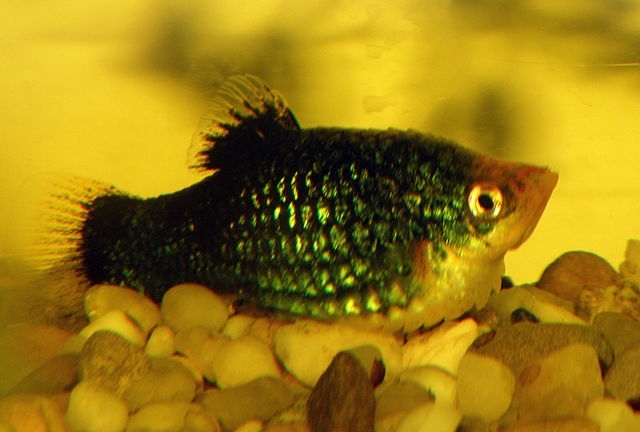Dropsy, mostly known as edema, is a condition in which your skin swells due to the retention of water.
While it is a condition that humans can have, it’s also well-known to fish breeders or those who keep their own aquariums.
Dropsy in fish can be a very dangerous health issue, which compromises the safety of your tank and the lives of all your fish. Since it doesn’t play favorites between saltwater or freshwater fish, it’s wise to be on guard at all times. Keep your eyes open!
So what specifically causes dropsy, and how can it be treated or prevented? Let’s find out.
Contents
Dropsy Causes
As with humans, fluid passes through the blood vessels and is released naturally, but dropsy can occur when fluid leaks from blood vessels and accumulates under the skin.
When a sufficient amount of fluid builds up, the skin starts to swell and change color. Some of the causes are:
Infection and Bacteria
Dropsy is most commonly contracted via an infection that attacks the kidneys of the fish. This first begins as bacteria they pick up from other infected fish, which then gets stuck in between their scales or tissue.
Once allowed to fester, this can lead to kidney disease or total kidney failure.
As with humans, when their kidneys do not function properly, they cannot filter out excess water and bacteria from their system, leading to swelling.
Imbalance in the Tank
Even with standard goldfish, it’s very important that your tank has a proper balance of ph, nitrates, and so on, that way your water-pets can enjoy an environment as close to their natural habitat as possible.
If the balance is off, or if there is an excess of algae or waste due to the tank not being cleaned often, bacteria is likely to fester.
This is a prime opportunity for dropsy to be contracted, even if your fish haven’t been in contact with others.
Symptoms of Dropsy
The condition manifests itself mainly in the coloring of the fish.
You’ll notice their typical hues and tones are off, and upon closer inspection, it will become clear that their scales have lifted from their skin. As a result, they will look spikey – or as if they are shedding their scales.
While dropsy can affect any species of fish, it’s most common amongst goldfish. This is partly due to the goldfishes’ status as a perfect starter pet, meaning they’re sold in bulk – where they can easily catch the infection from others of their kind.
Some common symptoms of dropsy include:
- Swelling
- Discoloration
- Shiny or puffy-looking skin
- Lifting scales
- Stiff movements and sluggish swimming

How to Treat Dropsy Illness
Dropsy is not only an illness by itself but a potential plague on your aquarium. If your fish have dropsy, the first thing you should do is quarantine those clearly suffering away from the rest of the tank.
The tank will then need its water changed and interior cleaned thoroughly; however, this will shock the fish if done all at once, which can be fatal.
Instead, start with changing a quarter of its water. Over the course of days, change more until it’s all been replaced. Simultaneously comes the treatment of the infected fish.
You can find antibiotics to treat dropsy online, but it may be wise to visit a vet if your fish are rare, expensive, or delicate – unlike typical bettas or goldfish. Since the more exotic the fish is, the more sensitive it will be to medication, it’s important you choose the right one.
Once you’ve obtained the appropriate antibiotic, treat the infected fish as well as the original tank. While your other tank occupants may not be infected, it’s best to start from a clean slate so as to be sure.
In addition to antibiotics, you can use other treatments. Once again, the type of species is important, but as a general rule, methylene blue, electrolyte salt, and Epsom salt baths twice a day for the infected fish will help treat the condition and reduce the swelling.
Additionally, it will boost their overall health – which is important, as the change of scenery will be very traumatizing for them.
After a week, you should see an improvement not only visually, but also behaviorally. Are the fish more active? Do their scales seem to be pressing down once again?
It’s not uncommon for fish to shed some of their scales during this process, as depending on how long they’ve had the condition, some portions of their skin may have died.
This isn’t an immediate cause for concern, depending on the fishes’ behavior and how much they’ve shed.

Prevention
To prevent future cases, it’s wise to routinely inspect your fish to see if they’re exhibiting signs of dropsy.
If your fish are less sensitive to medications, then a precautionary dose of dropsy antibiotics or anti-fungus solutions will help cleanse the tank overall.
This video explains more on dealing with dropsy.
Do you have any tips for treating dropsy?


